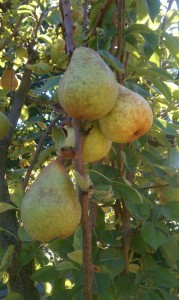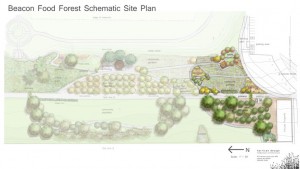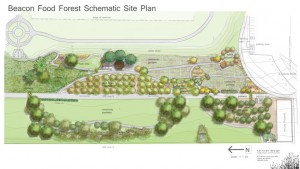
This project has been a while in the making (the idea formed in 2009), but it’s finally coming to fruition (pun intended?!). In our very own neighborhood of Beacon Hill at Jefferson Park, a food forest project is being developed. What is a food forest, you might ask? According to the Beacon Food Forest site:
“A Food Forest is a gardening technique or land management system that mimics a woodland ecosystem but substitutes in edible trees, shrubs, perennials and annuals. Fruit and nut trees are the upper level, while below are berry shrubs, edible perennials and annuals. Companions or beneficial plants are included to attract insects for natural pest management while some plants are soil amenders providing nitrogen and mulch. Together they create relationships to form a forest garden ecosystem able to produce high yields of food with less maintenance.”
Growing an edible forest in the inner-city will help provide produce to those who need/want it and it will be maintained by volunteers in the community. The Friends of the Food Forest secured a $22,000 grant through the Neighborhood Matching Funds program in Seattle (a great resource for community initiatives and small projects). Informational postcards to gather volunteers for the planning phases were sent out in five different languages and the local Samoan community (who frequent Jefferson Park for cricket games) was consulted about which types of plants they would like to see in the food forest. At a number of community meetings, the food forest was planned and the first phase of the forest will be planted this spring 2012:

The final food forest plan should look something like this, to be completed in the coming years:

 Follow
Follow

I just learned about this a few days ago. Totally jazzed! Can’t wait to check it out once the snow stops flying! (LOL). xoxo
Seriously. Snow! You guys should come by and we can make a little trek/picnic over to the park to check it out.
This is really exciting. I can’t wait to check it out and watch it happen.